Motivating young people
During the last days before Tet, when passing Pham Ngoc Thach Street (District 3, Ho Chi Minh City), it is not difficult to recognize the alley leading to the "Vietnamese silk house" through the striking colors of soft silk strips flying in the wind. Located on the foundation of an ancient villa is the showroom space displaying silk paintings and hand-painted silk ao dai by designer - artisan Trung Dinh and his students.
With 12 years of pioneering, initiating and creating a strong wave for the movement of hand-dyed silk and silk painting using new methods, the artisan from Phu Yen has long cherished the plan to open a showroom but only now has it come true. Trung Dinh shared: "Through this space, I hope to inspire students to pursue the profession of silk painting and to arouse inspiration in young designers. I hope young people will give special favor to Vietnamese silk fabrics instead of foreign materials."
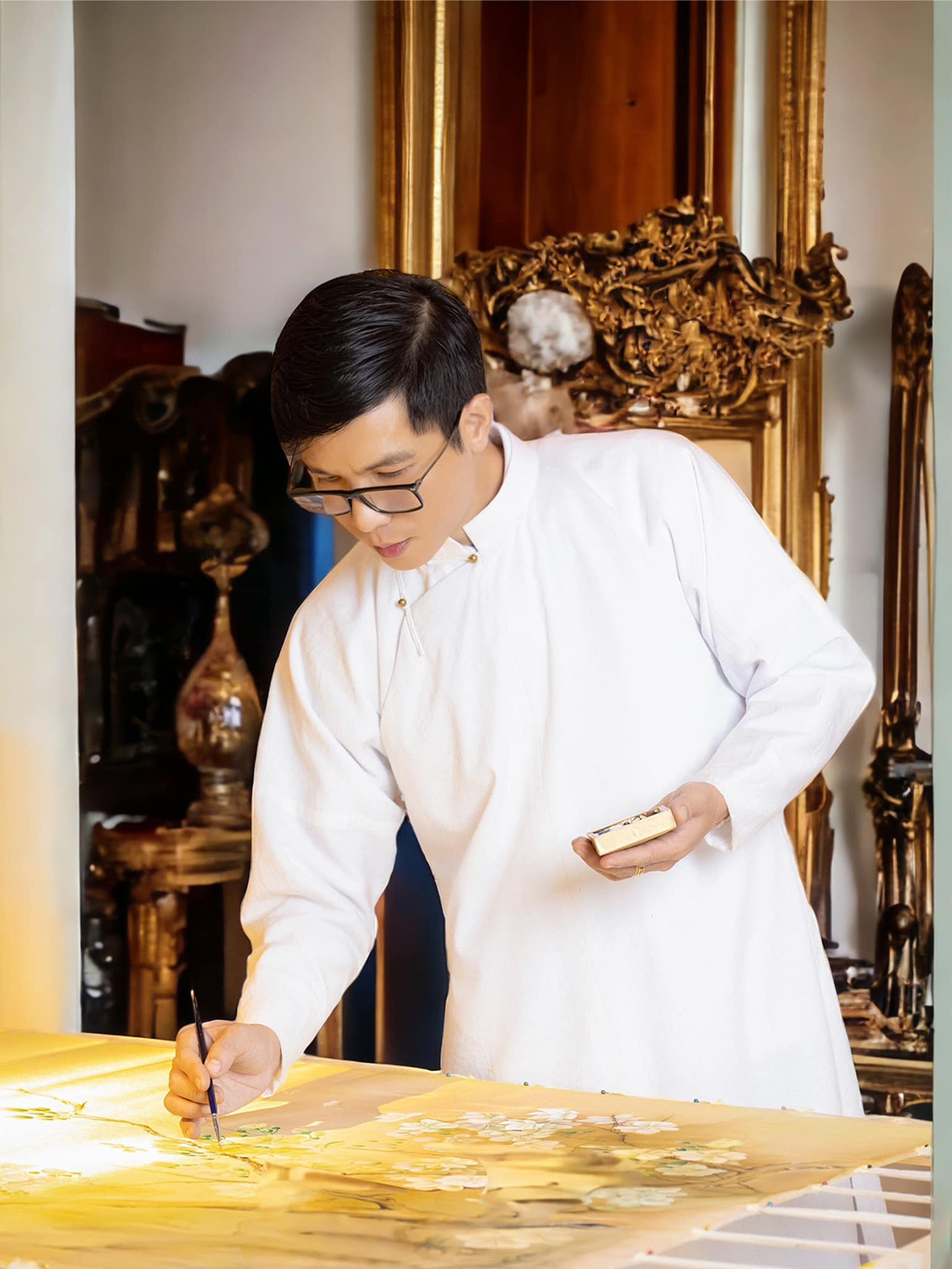
Designer Trung Dinh guides silk painting
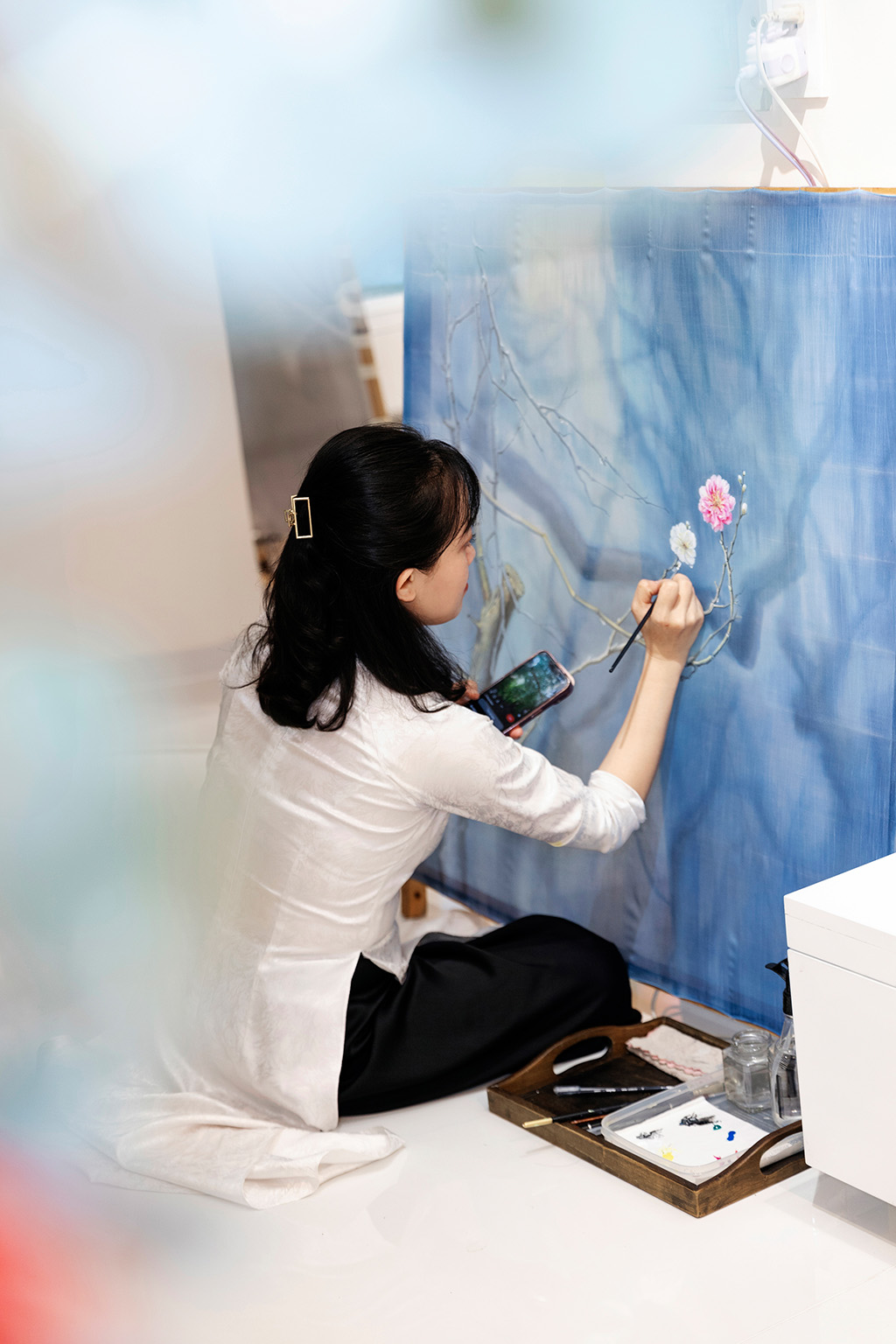
Young artist paints silk paintings on scarves and ao dai
Before falling in love with Vietnamese silk, the designer born in 1983 was the creative director of an Italian fashion brand. However, he decided to stop his dream job to focus on developing ombre silk dyeing techniques and hand-painted silk paintings.
Trung Dinh said that since he was a fashion design student, he realized that one of the biggest problems of Vietnamese fashion, especially for young designers, is the dependence on the market. If big brands can order materials with patterns and colors according to their requirements, young people can only make fashion based on what the fabric market provides. If Vietnamese silk cannot "live" in its own country, how can it be exported? This question made him dive into research and realize that the reason why the silkworm-growing villages are gradually disappearing is because they can only sell raw fibers instead of high-quality finished silk.
After more than 2 years of experimenting with countless failures, designer Trung Dinh has successfully researched the technique of manually dyeing silk using acrylic paint. In addition, he also developed a new silk painting technique that is simpler and easier to apply. These two techniques are cleverly combined on ao dai costumes, silk scarves, dresses, handbags, etc., achieving both aesthetic effects and approaching fashion trends and consumer needs. Trung Dinh said that at first he had to find each student to train and pass on the profession in order to build a silk dyeing and silk painting movement; to date, the number of students has exceeded 4,000.
"I am happy that I am the one who initiated the movement of loving silk, culture and Vietnamese handicrafts. This path is becoming clearer and clearer, more and more young people know about it and choose to pursue it. I believe that many generations of artisans, painters and designers will revive the Vietnamese silk road," Trung Dinh confided.
Connecting Painting and Fashion
The silk fabrics used by the 8X generation and the students of artisan Trung Dinh are mostly Nha Xa silk (Duy Tien, Ha Nam), Bao Loc silk, Toan Thinh silk... White silk sheets are stretched flat on bamboo frames and painted with many layers of color to create the desired light and dark shades. This technique allows artisans to create color patches (ombre dyeing) and create desired colors. Following the dyeing process is the drawing of motifs according to the theme using realistic painting techniques to create impressive artistic effects.
Among the more than 4,000 students of designer Trung Dinh who have graduated, many have built their own brands, and many have worked for other brands and designers. Vo Thien Vu is one of the students who was retained to become an ao dai painter. The young man born in 2003 said that after taking the university entrance exam, he packed his bags and went to Ho Chi Minh City to study the profession. Vu is satisfied with his choice instead of following his family's direction. He said: "Learning handicrafts requires meticulousness and patience. I find myself loving culture more, loving ao dai and loving Vietnamese silk handicraft painting more after 3 years of attachment."
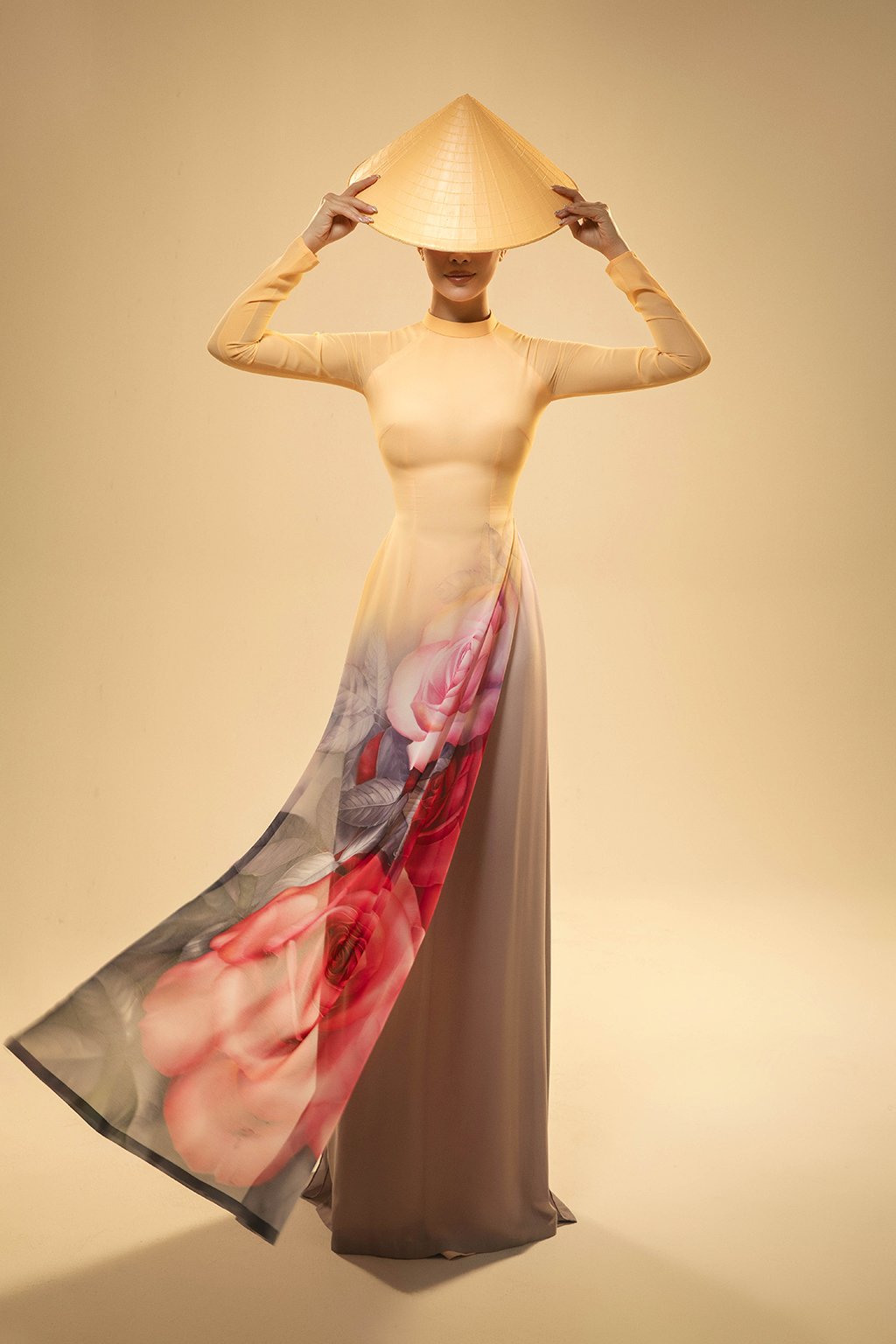
Runner-up Kim Duyen in an ombre-dyed and hand-painted ao dai with watercolors
PHOTO: GLASSES TEAM
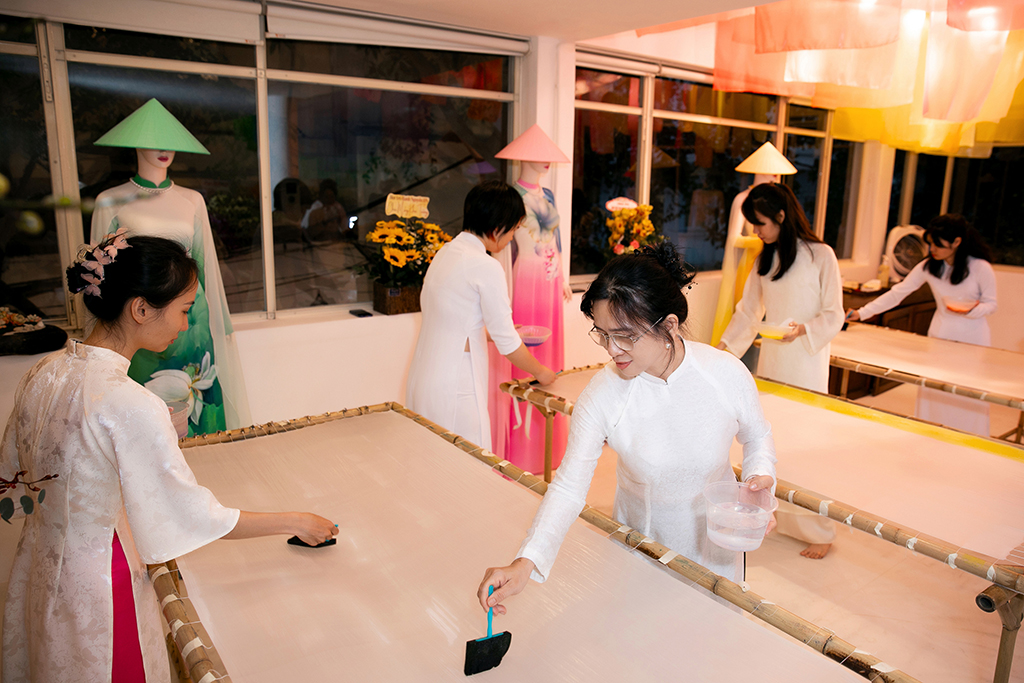
Hand dyeing demonstration on silk
PHOTO: GLASSES TEAM
Linh Trinh, another former student, chose to build a drawing center. She opened online and in-person courses to teach drawing on handbags, t-shirts, shirts, masks, ao dai, etc. with a variety of topics.
Artisan Trung Dinh said that silk painting is not only learned by young people as a career, to satisfy their passion for painting, but also considered a healthy form of entertainment. Many students in their 70s come from all over the country, some from the US and Canada, to Vietnam to learn painting and silk dyeing as a way of "meditation" besides the joy of creating their own silk paintings or unique costumes for their own use.
As one of the few designers who have both made a splash with beautiful collections and impressive cultural stories, Trung Dinh has been invited many times to participate in cultural and diplomatic events in Ho Chi Minh City. In 2024 alone, he brought his Ao Dai collections to show off 3 times, introducing the ombre dyeing technique in Ho Chi Minh City tourism promotion programs held in Australia, Japan and China. His Ao Dai collections of world famous landscapes, famous landscapes and beautiful landscapes of Vietnam have all made a splash. Viet Silk Showroom has also become a cultural destination, where there are not only Ao Dai, silk paintings but also stories about Vietnamese silk and silk handicrafts.
Source: https://thanhnien.vn/ve-tranh-nhuom-lua-de-giu-van-hoa-viet-185250204222331774.htm


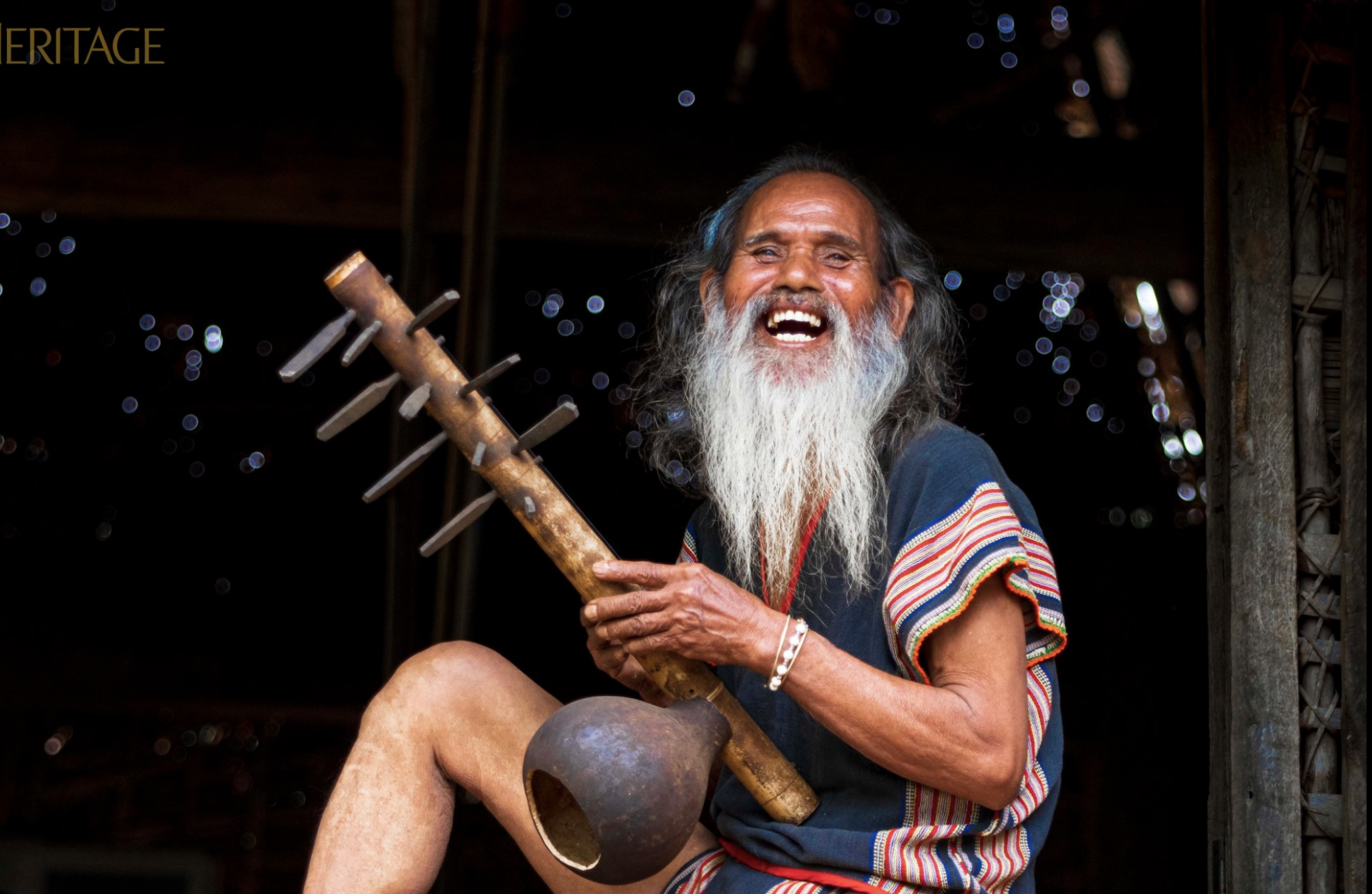






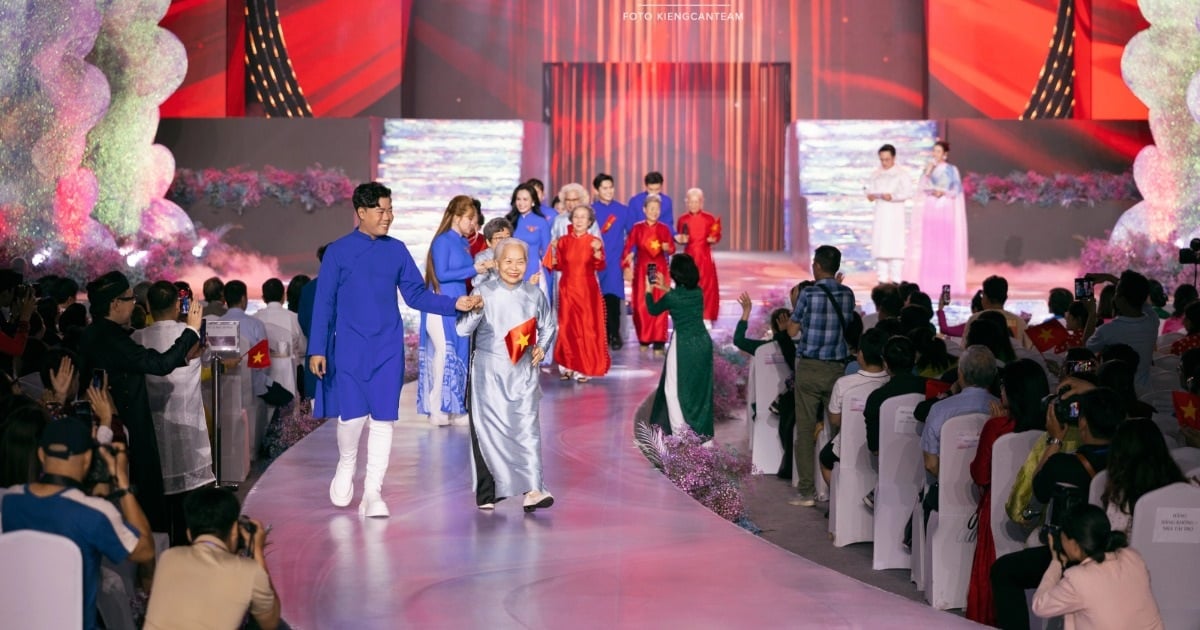

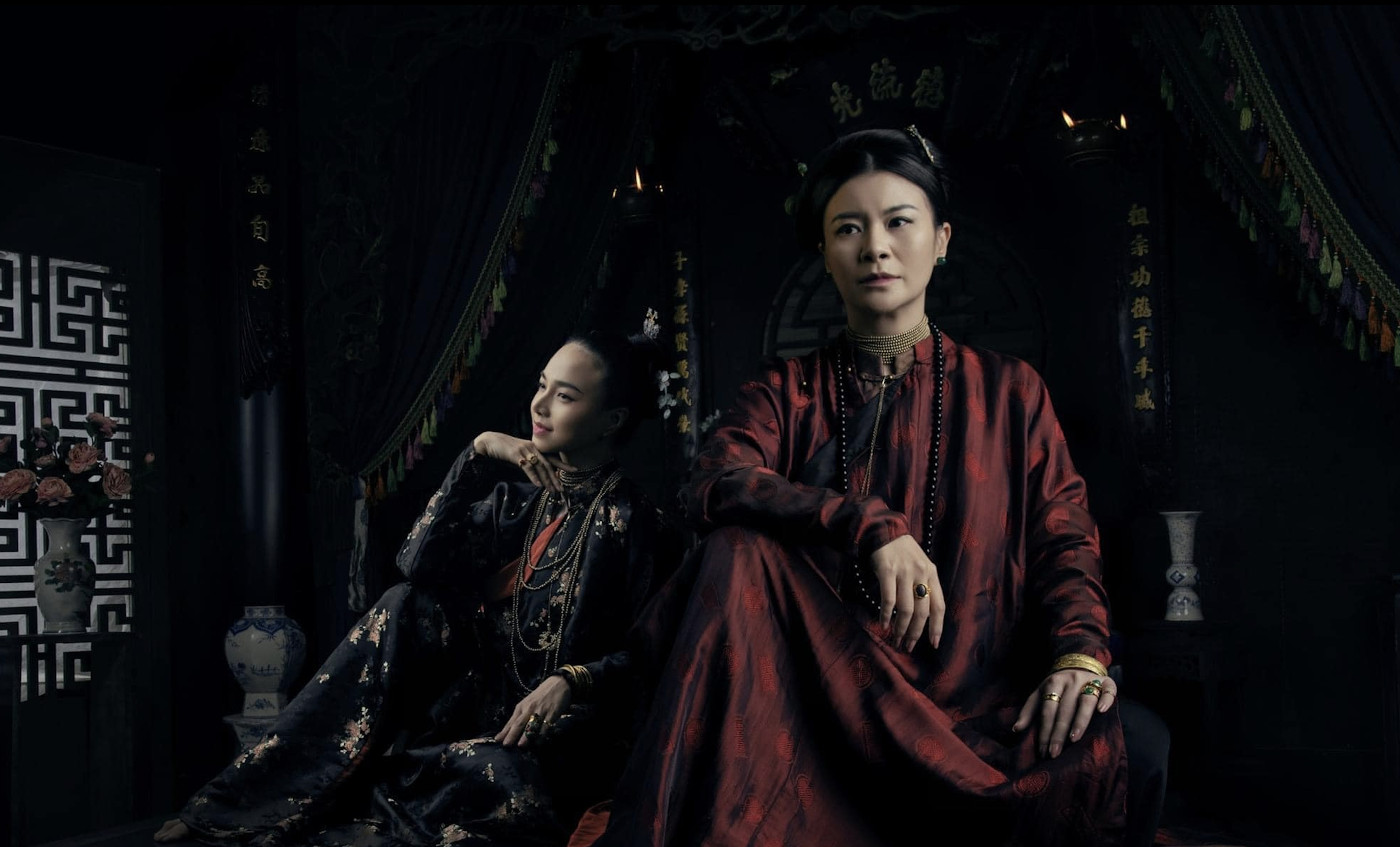

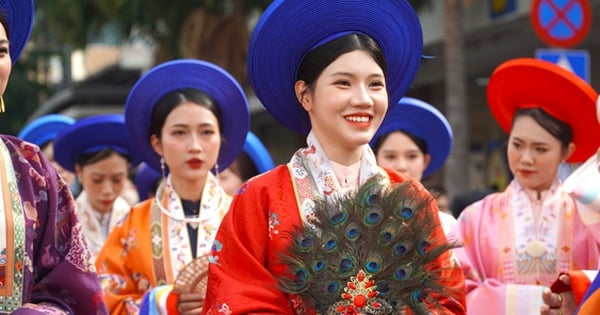




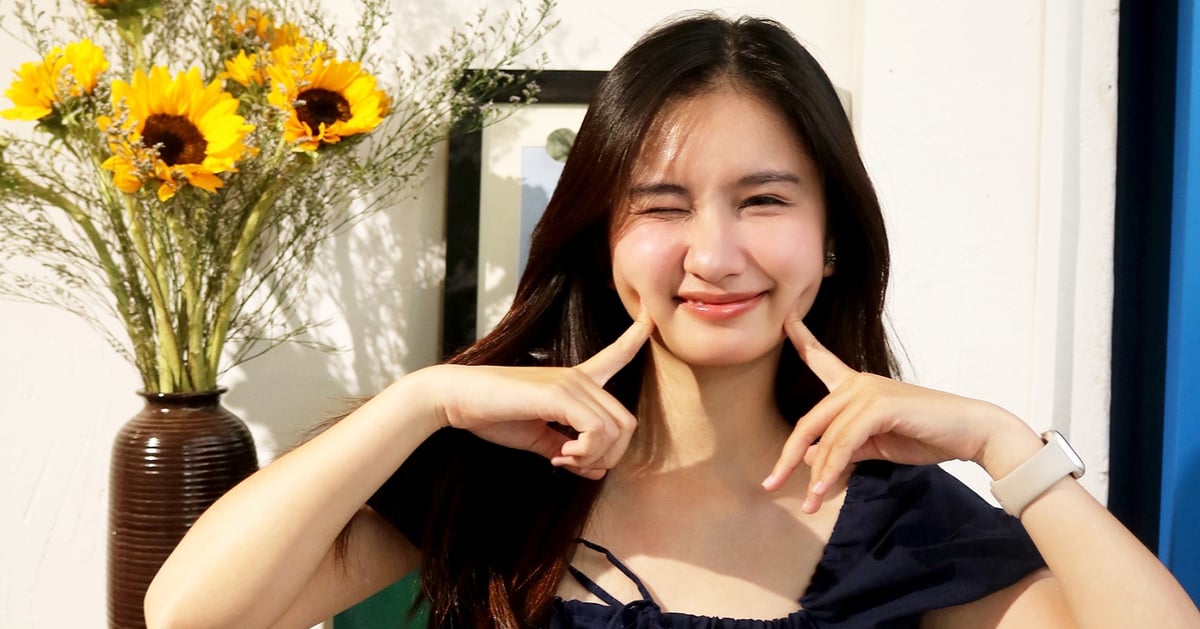






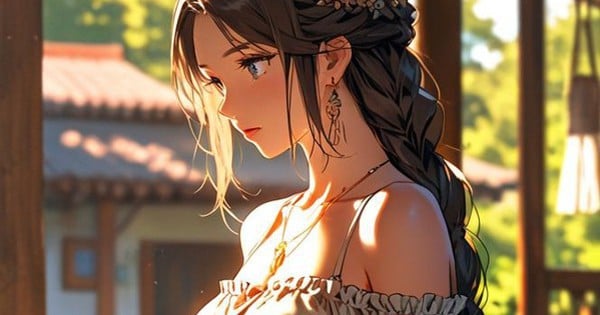

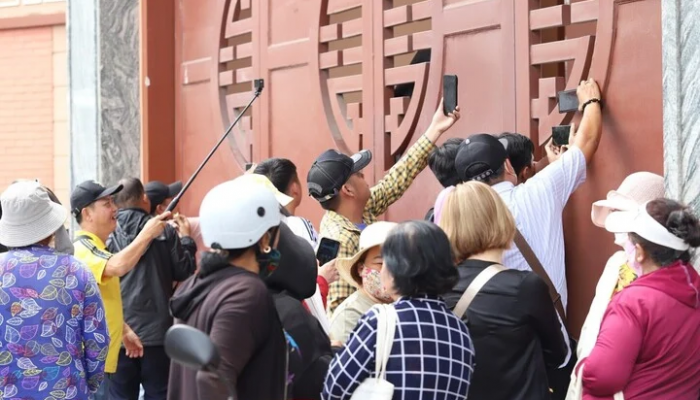








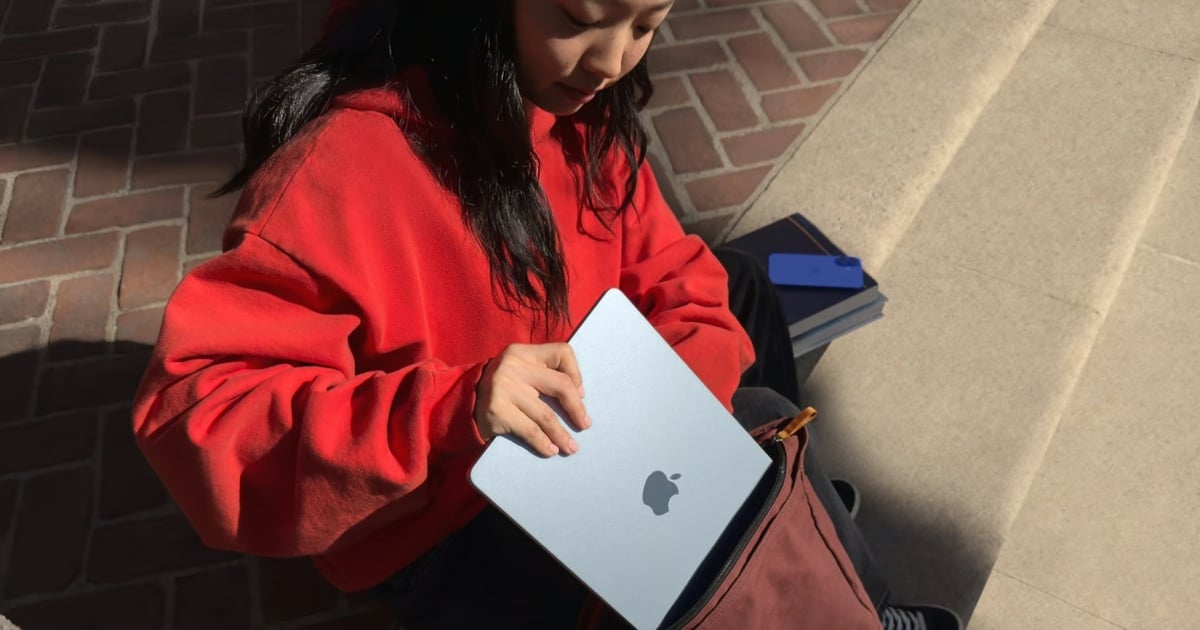
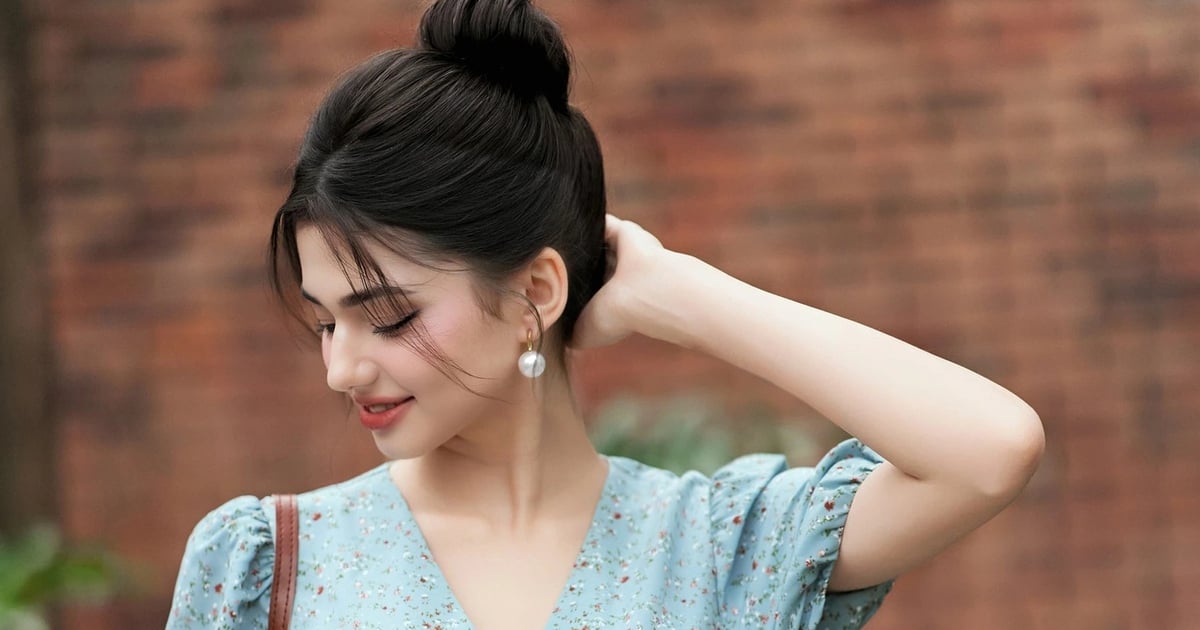


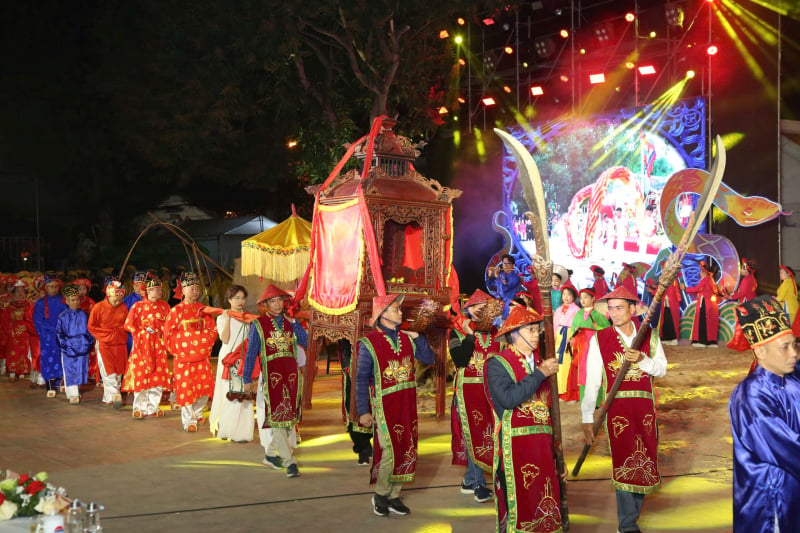

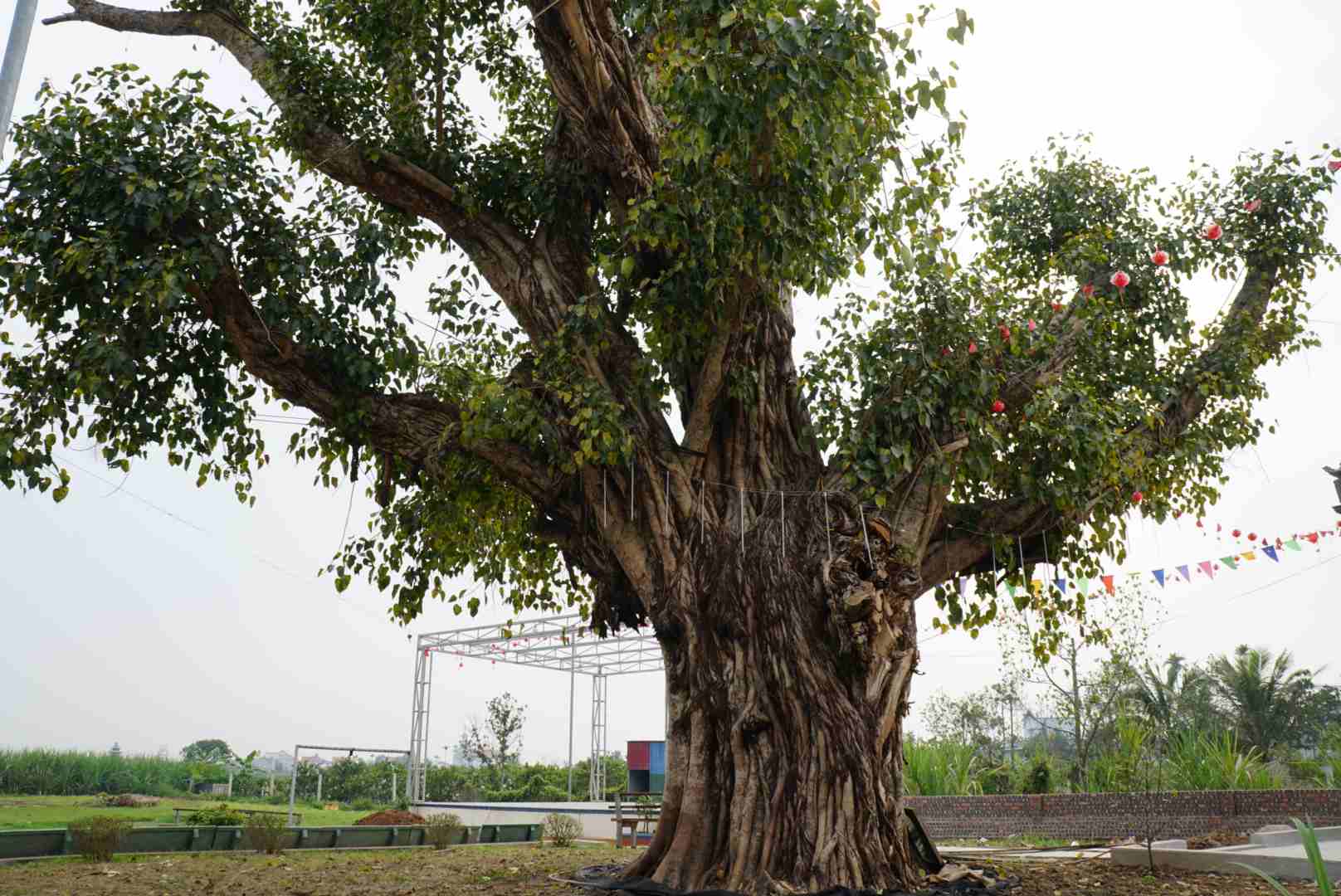



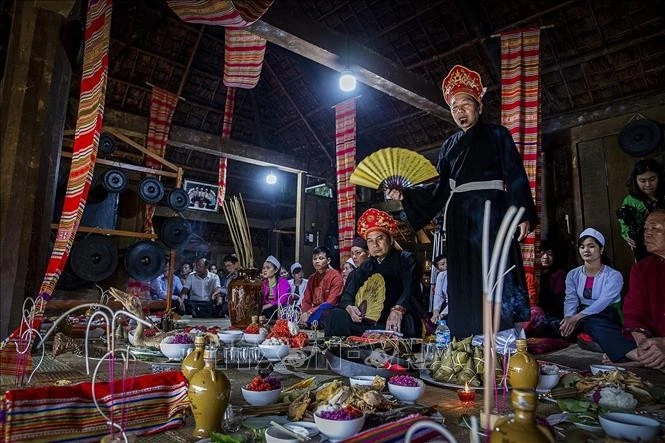

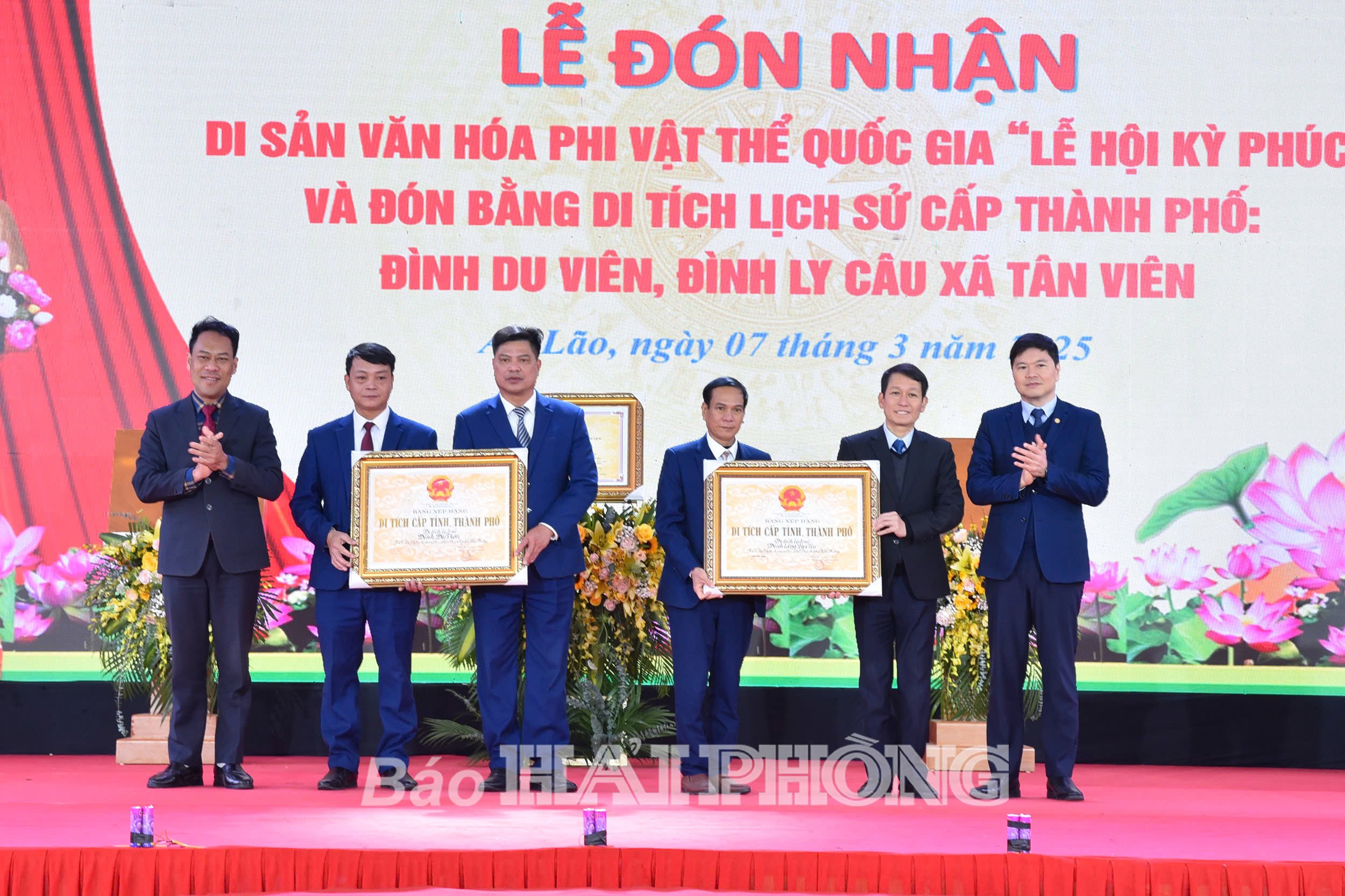
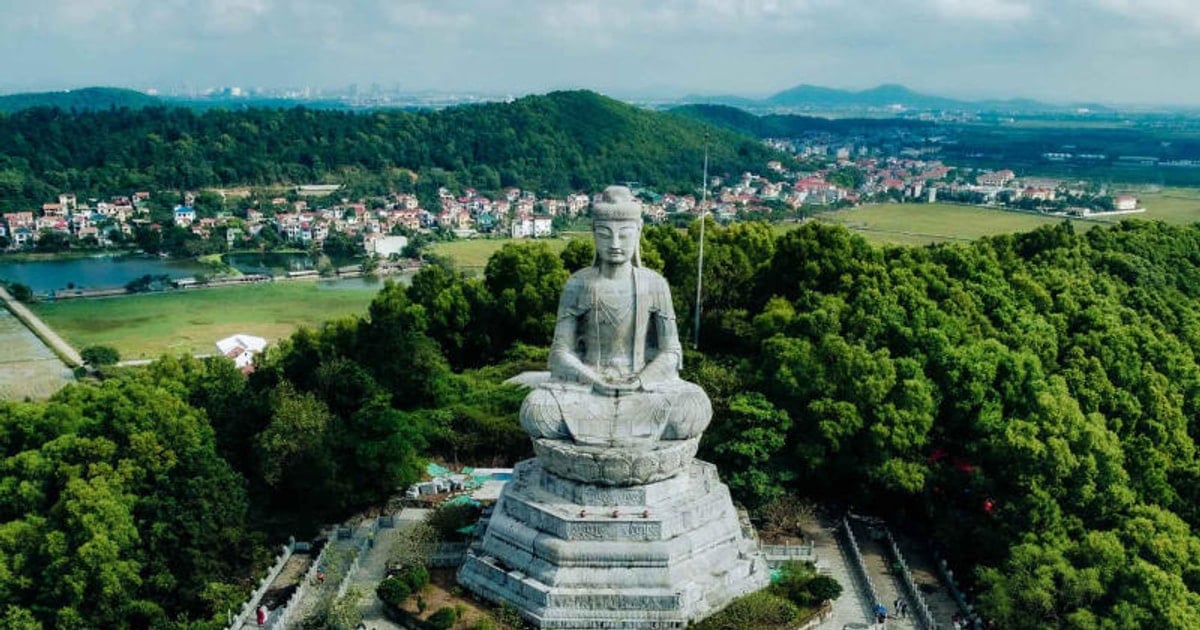

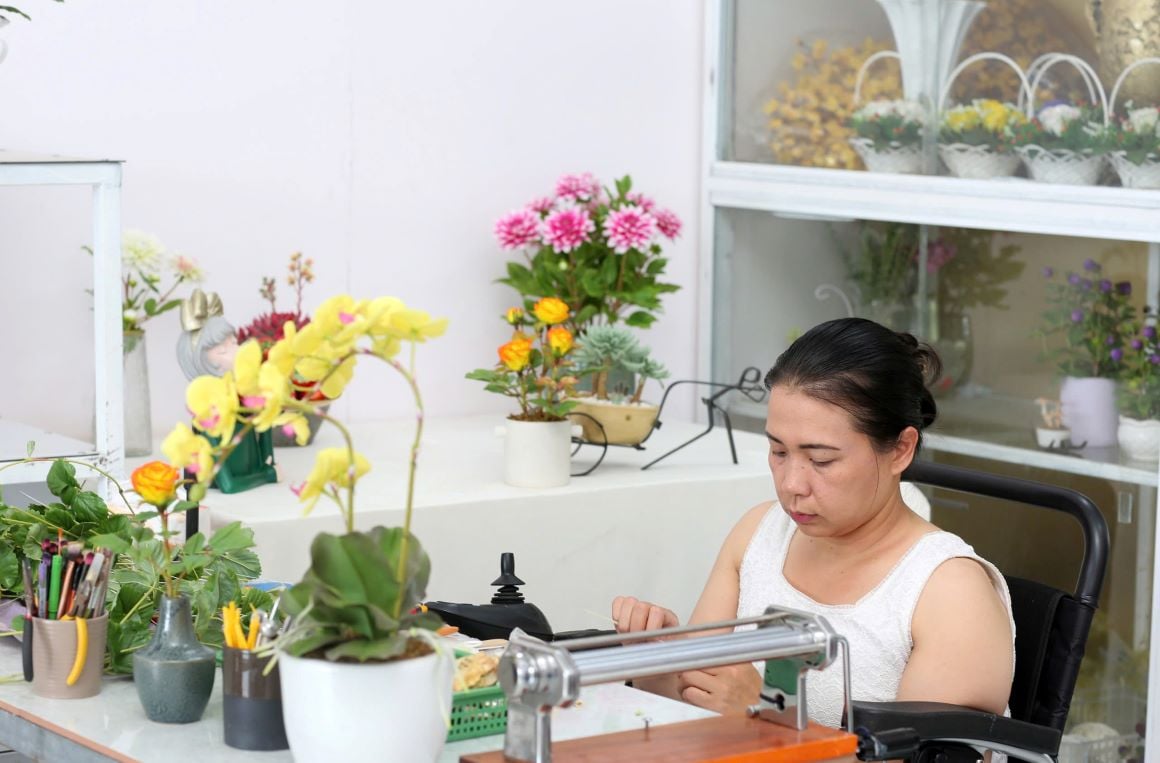

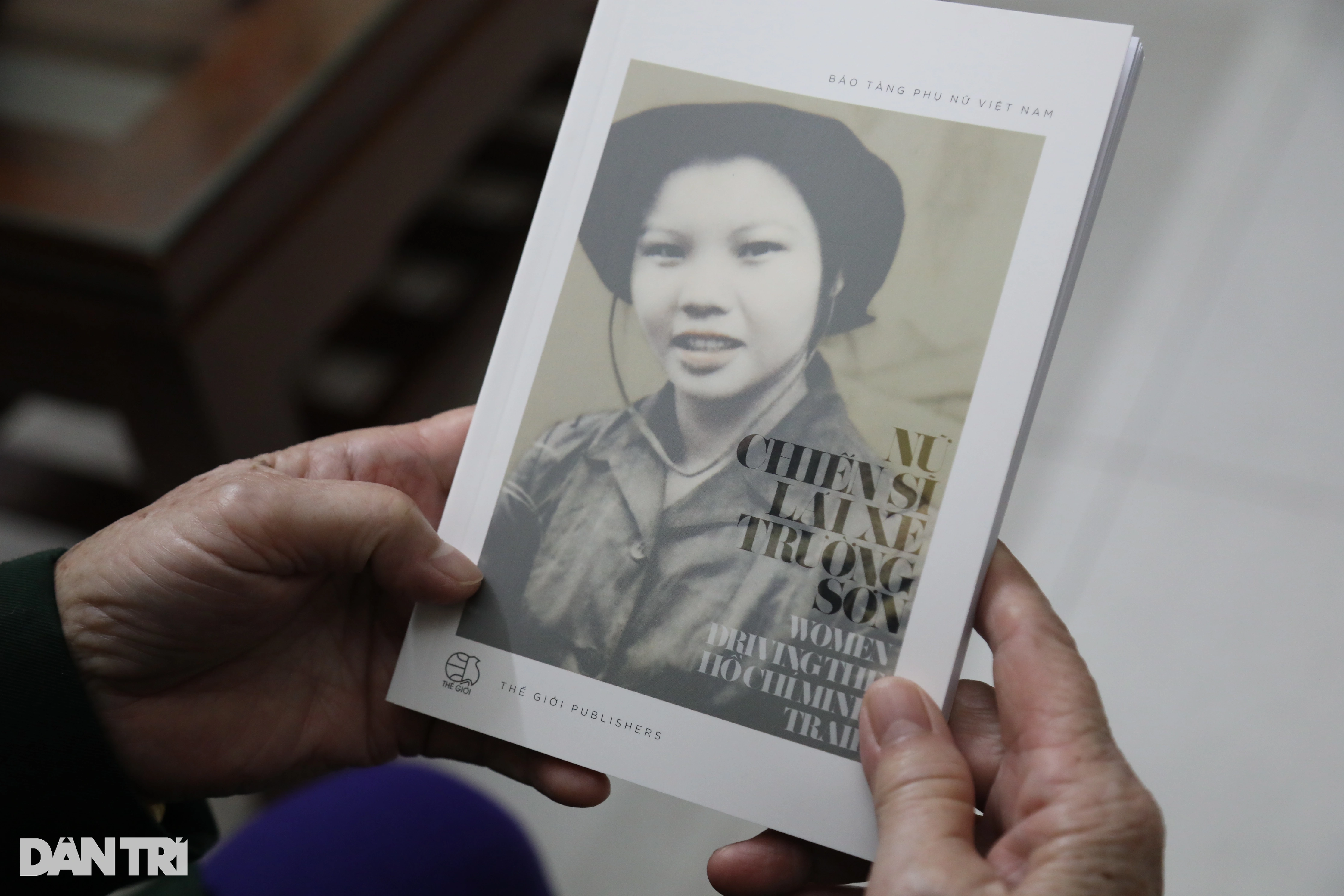
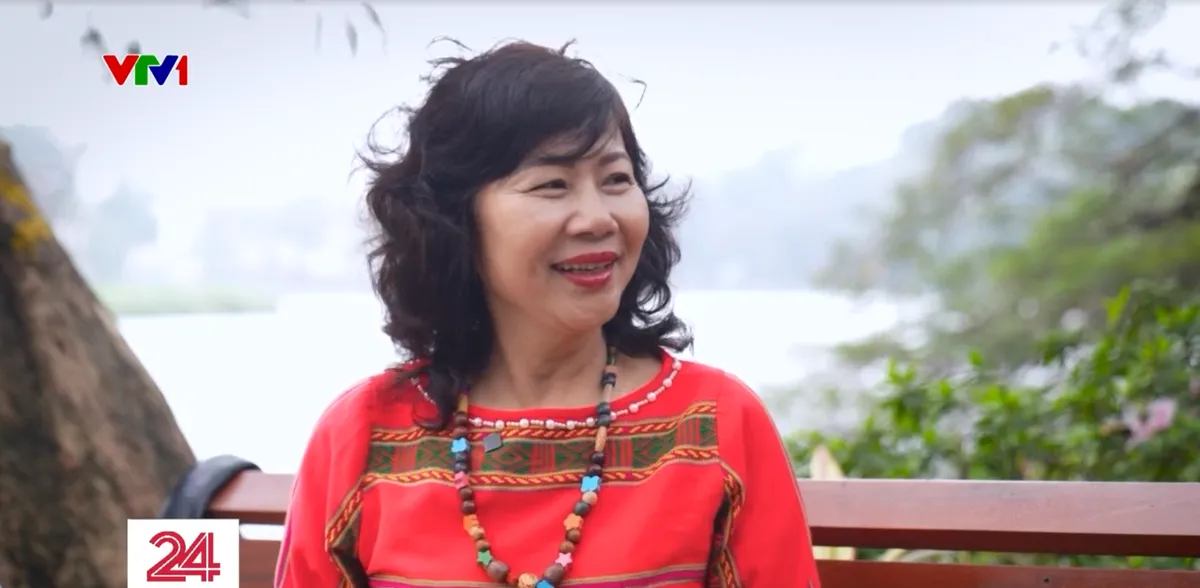

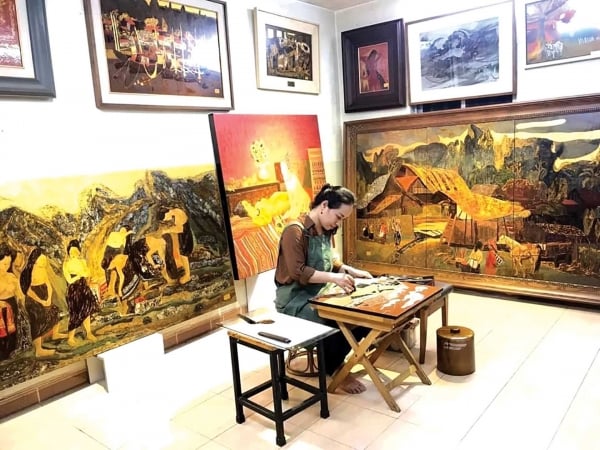









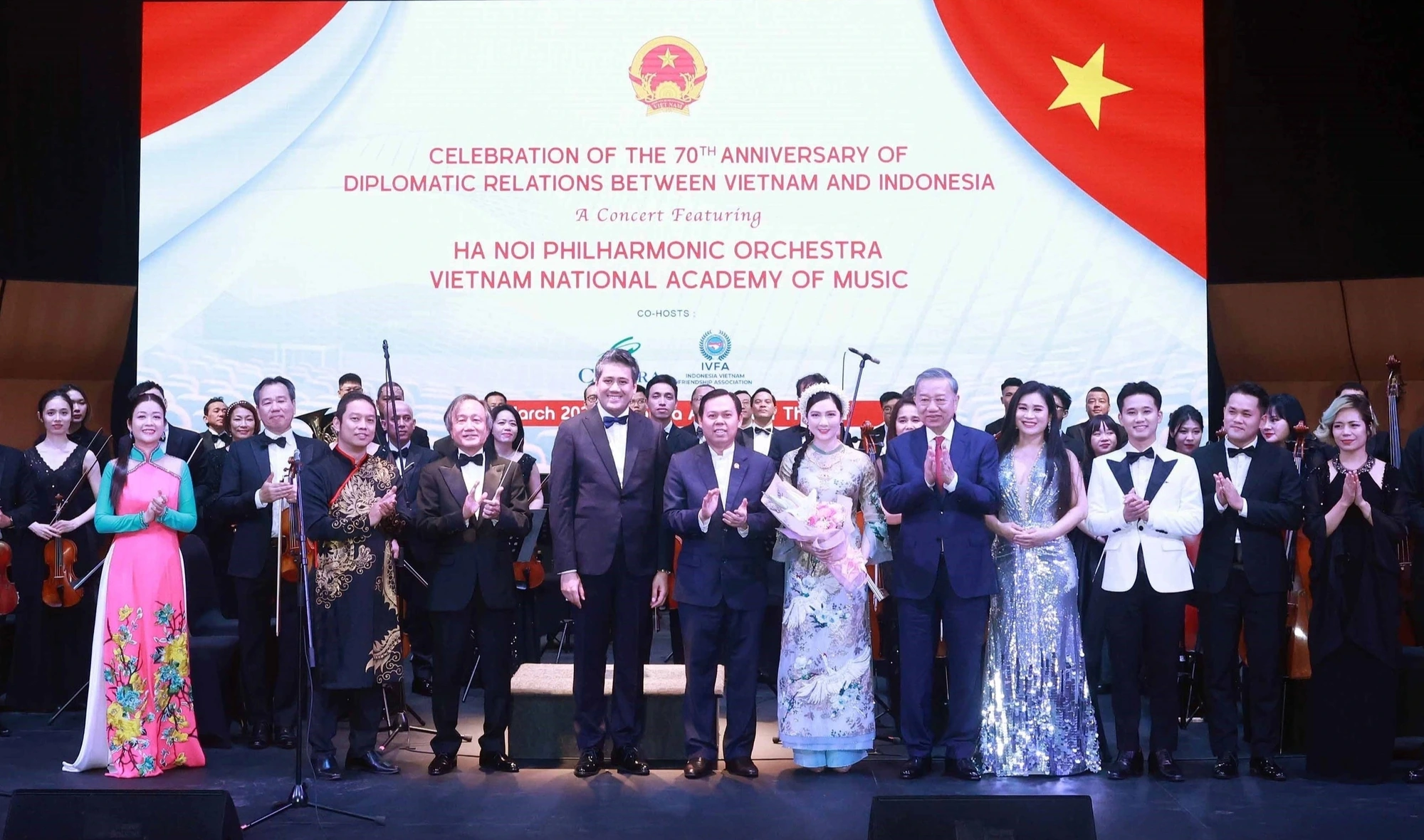




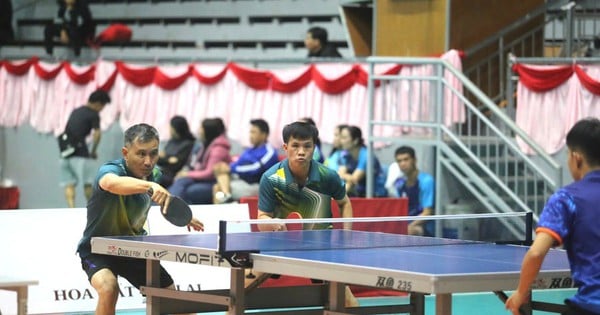












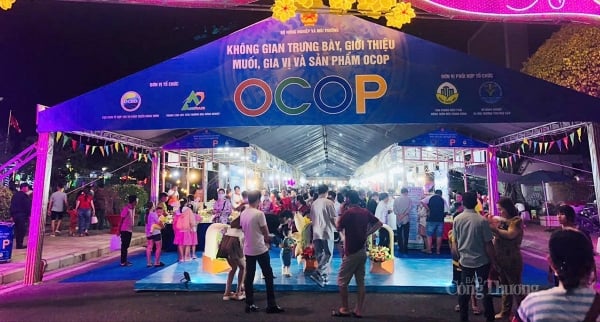

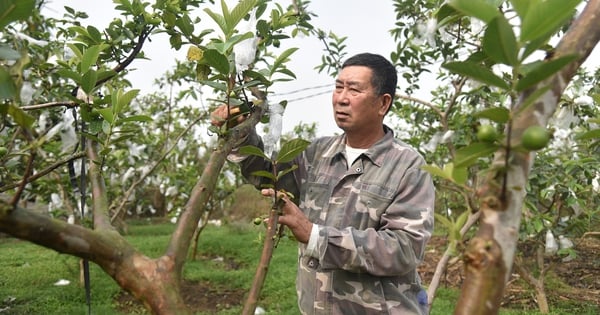

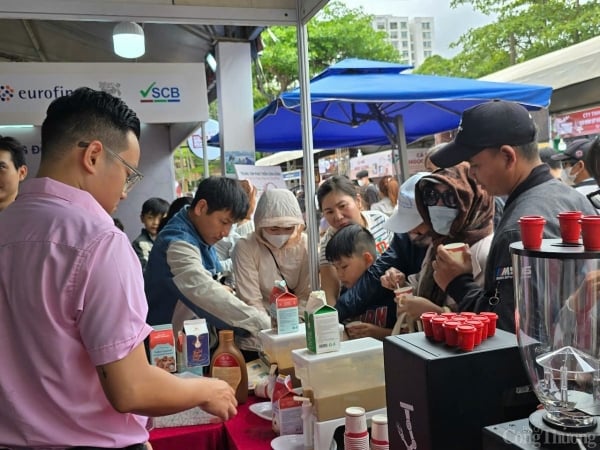

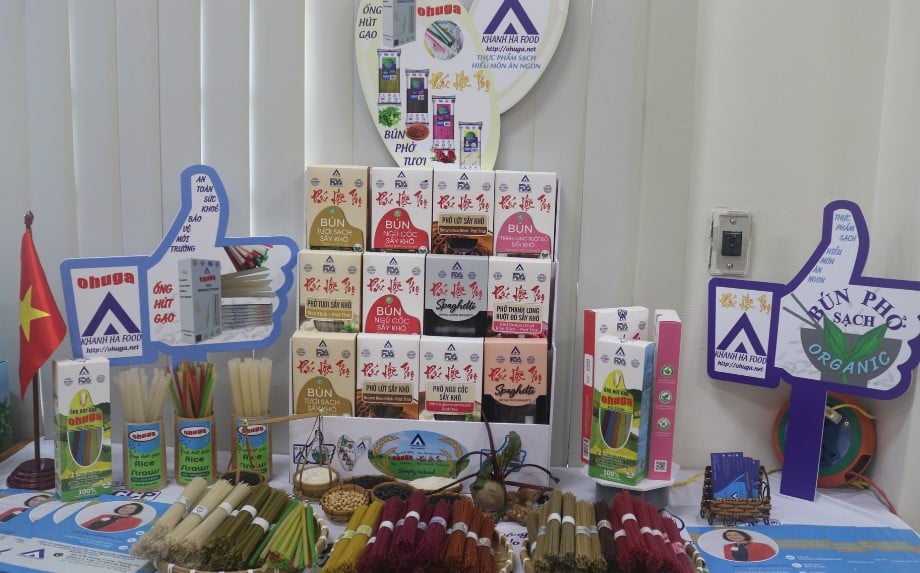

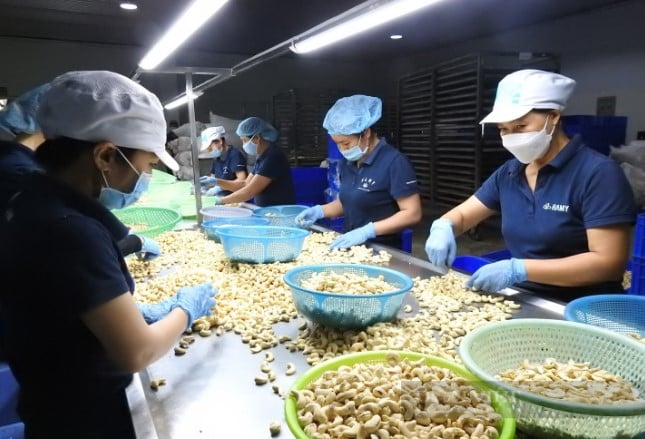
Comment (0)